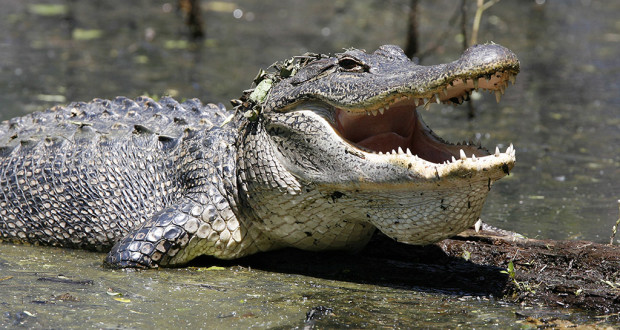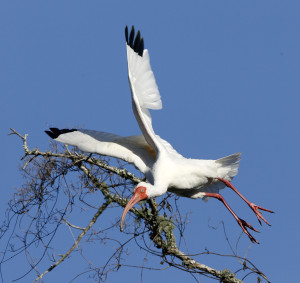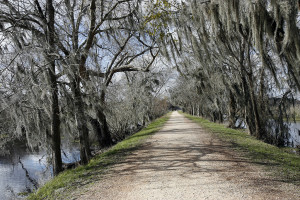They’re much less visible in the winter, but in warmer weather, you can tally more than a dozen with just a short walk. Large gators in the park reach more than 10 feet in length, while in the summer recent yellow-and-black hatchlings abound in the shallows. While they may appear lethargic, alligators can move surprisingly quickly when motivated by hunger or threats.
While alligators may be the headliners, the park has a considerable supporting cast, including a diversity of wading and woodland birds, waterfowl and raptors. In all, about 290 species of birds soar, float, perch and wade among the park’s wetlands, prairie and woodlands. The park staff describes some of the park’s other inhabitants:
The white-tailed deer is the largest of more than 25 different species of mammals present, which also include bobcats, coyotes, raccoons, gray and red foxes, river otters, feral hogs and several species of rodents. Approximately 21 species of reptiles and amphibians have been recorded, and the smaller turtles, lizards, snakes and frogs are overshadowed in general interest by the American alligator ….
Big Creek snakes through the center of the park before pouring into the Brazos River, which hugs the park’s east side. Sloughs, bayous and oxbow lakes branch off on either side. Hale, Horseshoe and Creekwood lakes are among those that started out as bends in the creek.
Elm Lake and 40-Acre Lake, connected by the Spillway Trail draped in Spanish Moss, are home to most of the park’s alligators. Wide, bicycle-friendly trails encircle both lakes and assemble into 3.7 miles of trails where you’ll commonly see White Ibises, Great and Snowy Egrets, Green, Little Blue and Great Blue Herons and Yellow- and Black-crowned Night Herons. Common Moorhens, Coots and Blue-winged Teal swim and waddle through the bayous and the lake edges.
While the west side trails are more wetland and tall grass prairie, the east side is more wooded, with most of the trails tracking along the bank of the Brazos River at some point. The forest along the river is dominated by sycamore, cottonwood and black willow trees.
An unusual highlight of the park grounds is the George Observatory whose domes house three large telescopes available to amateur astronomers and visitors on Saturday evenings. Depending the time of the year, you can gaze at Saturn’s rings, the cloud belts on Jupiter and other planets.
PARK GALLERY


















You must be logged in to post a comment.